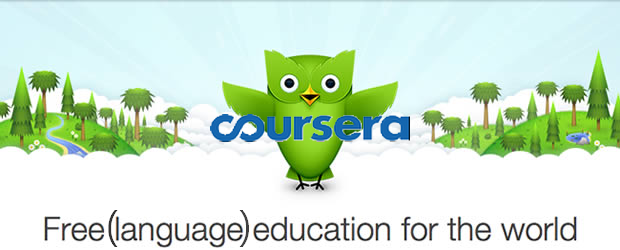http://https://www.youtube.com/watch?v=i4IVktnCnHY
In this blogpost we will discuss two platform mediated networks in the education industry.
A platform is a community that should have an useful function or service and allow 3rd party access. Furthermore, it is open and encourages regular participation in a multi-sided market between several partners.
Due to advances in technology and the spread of the internet, education is moving to the digital world. With the increase of tuition fees, a recent trend emerging is online education, specifically massive open online courses, short MOOCs, accessible to everyone.
Coursera offers those MOOCs and was founded back in 2012. It is a mediating network platform, connecting learners and academic institutions all over the world. Coursera offers over 2000 courses in a variety of disciplines.
At the moment, the Coursera offers three distinct course enrollment possibilities.
- The ‘free’ option includes material, online lessons and graded assignments but asks a one-time-fee of $49 for an official certificate
- The fee-based option offers content for free, but a fee for graded assignments and exams.
- The specialized courses option allows users to follow several sub courses, with a total fee range between $300 and $600.
Another education platform is Duolingo, a free language learning platform. While translating the web, the developers discovered a new way to do this. A free gamified language teaching application, Duolingo was born.
Duolingo believes in a fair business model for language education. While using Duolingo, you create value and pay with your time. Duolingo generates some revenues by translating real-world text provided by clients and covers further costs by offering low cost language proficiency tests to users.
Having introduced two mediated network platforms, the question arises what gives them the competitive edge or where they may lack behind? Therefore, one has to look at strengths and weaknesses of both platforms.
Both platforms share the following strength:
- Widely accessible
- Less expensive than their alternatives
- Large variety of content
- Big online community
Although both platforms share similar strengths, they each have unique weaknesses.
Duolingo
- Content is mostly centered around the English language
- Speaking: oral part lacks practice as focus is on written material
- The teaching methods can be subverted with other strategies.
Coursera:
- Costs for specific courses
- No academic feedback from a professor
- No official diploma, just certificates who are not yet widely recognized.
- Only mediator, no control over content
Education is moving towards digitization and will continue to do so. People will keep searching for cheaper alternatives to get education. Online education platforms will be able to foster its positive network effects due to the increased number of users. As the competition will keep increasing in the following years, differentiation will become more and more important. Online content is becoming more widely available, easily accessible and will forever change the way of learning as we know it now.
Group 60
459556 – Moritz Schaifers
460853 – Femke Sytstra
387024 – Max Oudenbroek
380957 – Shichen Yang

